30 Civil Rights Leaders of the Past and Present
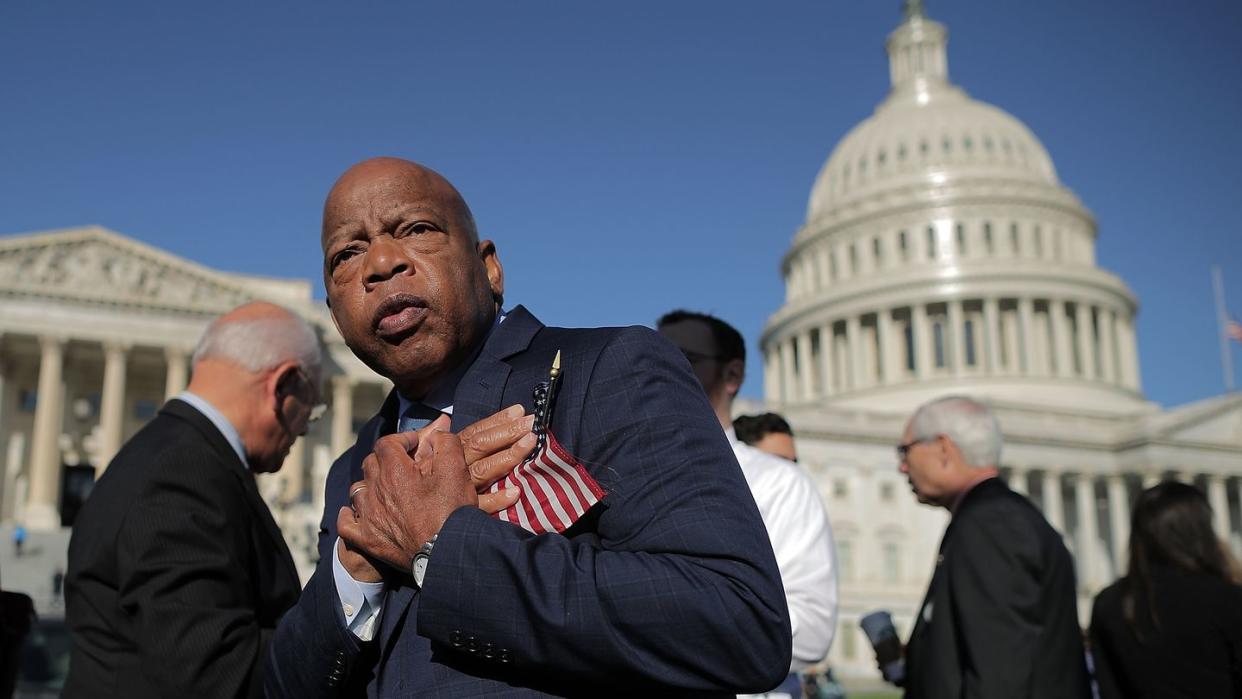
- Oops!Something went wrong.Please try again later.
- Oops!Something went wrong.Please try again later.
- Oops!Something went wrong.Please try again later.
- Oops!Something went wrong.Please try again later.
- Oops!Something went wrong.Please try again later.
- Oops!Something went wrong.Please try again later.
- Oops!Something went wrong.Please try again later.
- Oops!Something went wrong.Please try again later.
"Hearst Magazines and Yahoo may earn commission or revenue on some items through these links."
When you’re asked to think of vital Black American civil rights leaders, it’s likely that Martin Luther King Jr. instantly comes to mind—and why wouldn’t he? Throughout the 1950s and ’60s, the hero of the Civil Rights Movement was an unparalleled pillar of strength for African Americans in the nonviolent fight toward equality and the end of legal segregation in the United States. It’s clear that understanding his work—from his arrests to his demonstrations to his unforgettable words of wisdom—is key to having a clearer picture of not only Black history, but American history.
But he’s not the only figure we should actively learn about. Many Black civil rights activists preceded him, stood beside him, or have come after him and toiled in his memory, making it their priority to fight for the freedom of all Black Americans against all odds. Although you might recognize a few of these names from the pages of your history books or Black History Month lessons, others might turn out to be welcome discoveries, especially those hidden figures of our time. Then there are the leaders in our present moment who work to ensure people recognize that #BlackLivesMatter. Although their collective work spans decades, these civil rights leaders all have something in common: We’ll continue to feel their impact for generations to come.
Here are some highlights from the illustrious careers of 30 civil icons, including W.E.B. Du Bois, Dorothy Height, John Lewis, Ibram X. Kendi, and Ruby Bridges.
Ida B. Wells
1862-1931
As a dedicated journalist and feminist, Ida B. Wells used investigative reporting to shed light on the horrors of the lynching of Black Americans in the Jim Crow South. According to The Guardian, her work contradicted the common accepted belief that only rapists and other criminals were killed, rather than just victims of racism. Wells was also a cofounder of the NAACP and worked alongside Susan B. Anthony during the women’s suffrage movement.
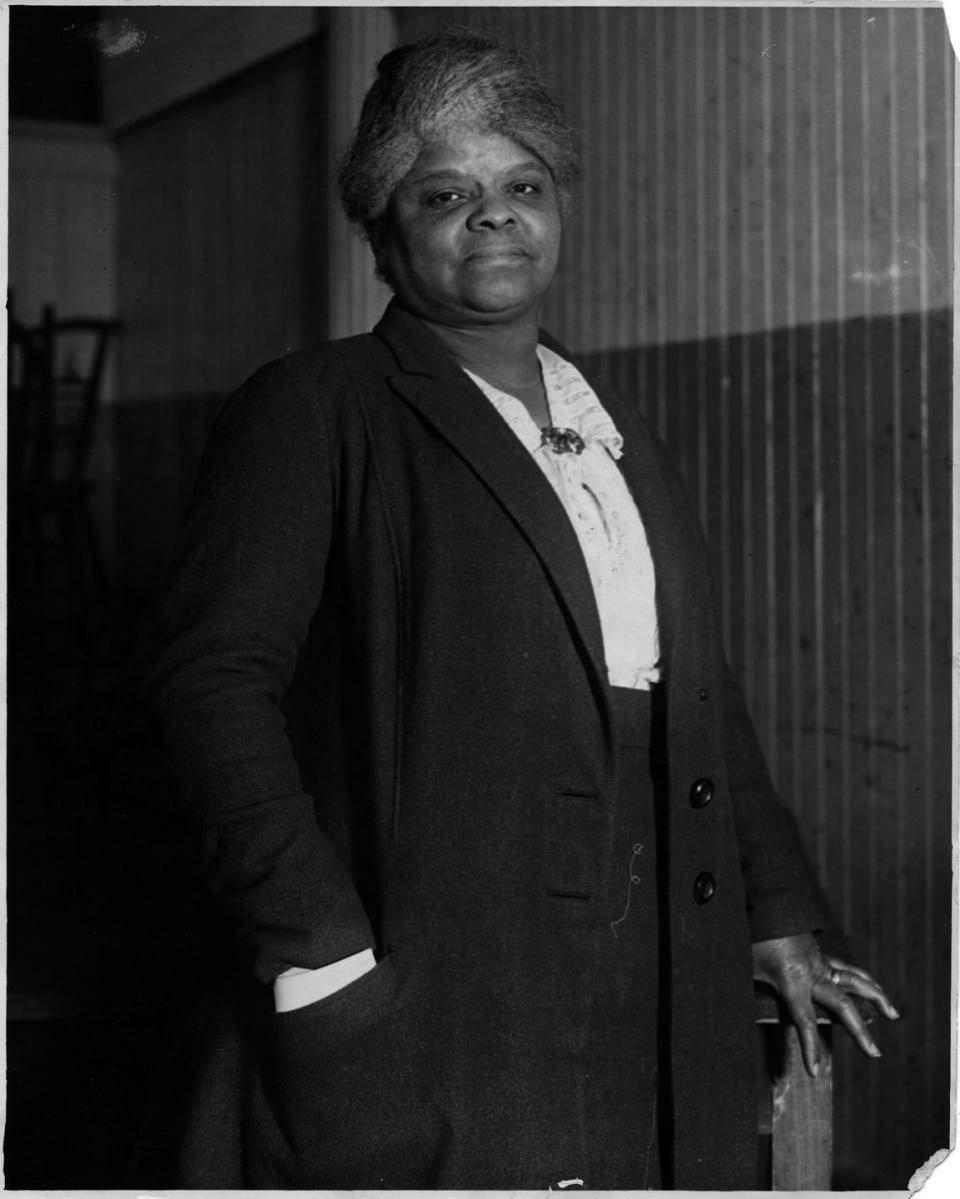
Mary Church Terrell
1863-1954
A graduate of Oberlin College, Mary Church Terrell used her status as a member of the upper-class Black community to promote the advancement of her people through activism and education. Terrell’s father was enslaved before becoming one of the South’s first Black millionaires, according to the National Women’s History Museum. Terrell cofounded the National Association of Colored Women and the NAACP.
Read More about Mary Church Terrell
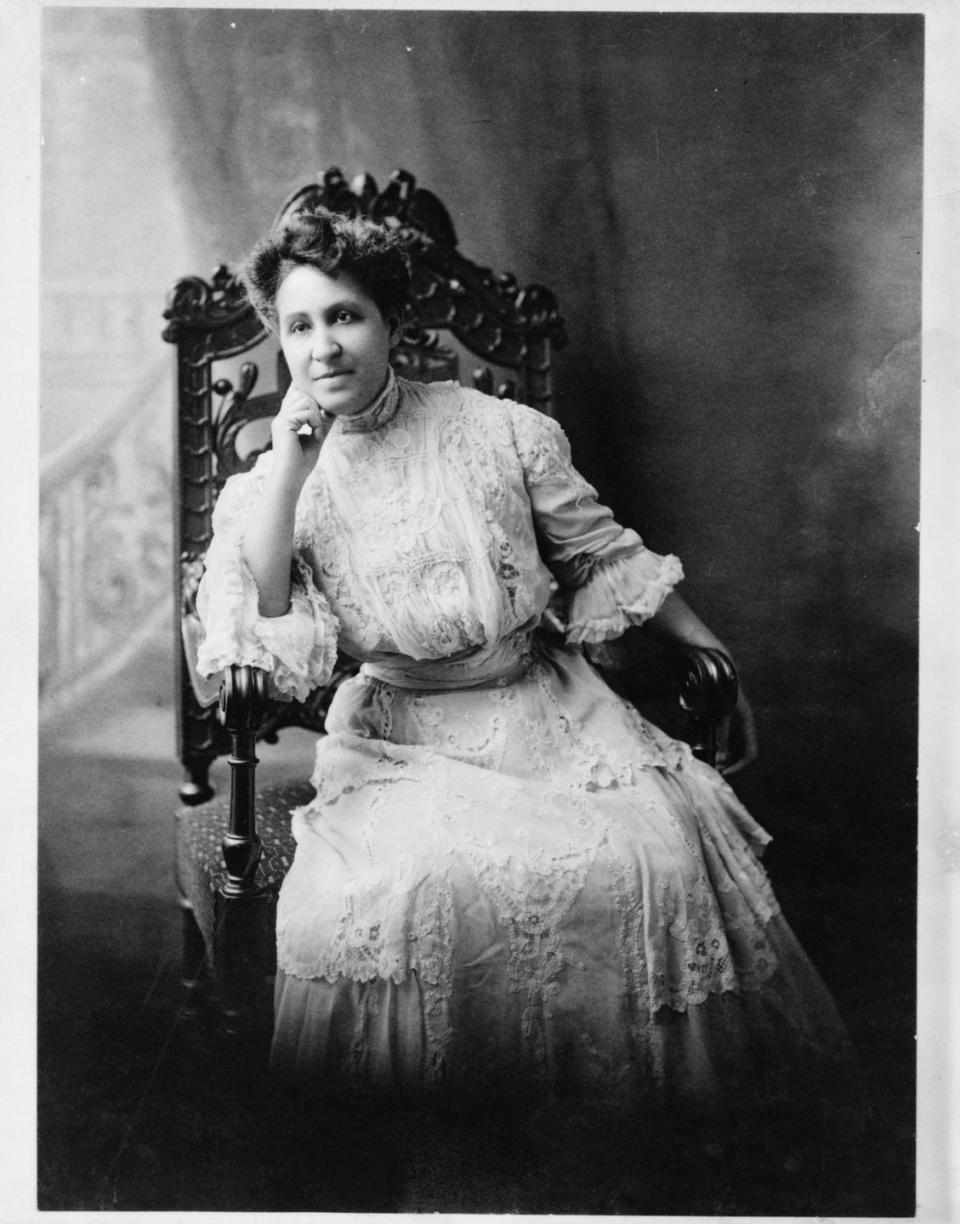
W.E.B. Du Bois
1868-1963
W.E.B. Du Bois was a sociologist, historian, and editor who cofounded the NAACP in 1909. In addition to serving on the board of directors and as a director of publicity and research, the Harvard graduate was also founder and editor of the NAACP’s magazine The Crisis. Through the publication, he influenced readers with ideals that were considered radical at the time. He advocated for protests and challenging of the societal norms that kept Black Americans segregated from their white counterparts. He encouraged integration and Black nationalism, values that were in direct opposition to the more conservative civil rights leader Booker T. Washington.
Read More about W.E.B. Du Bois
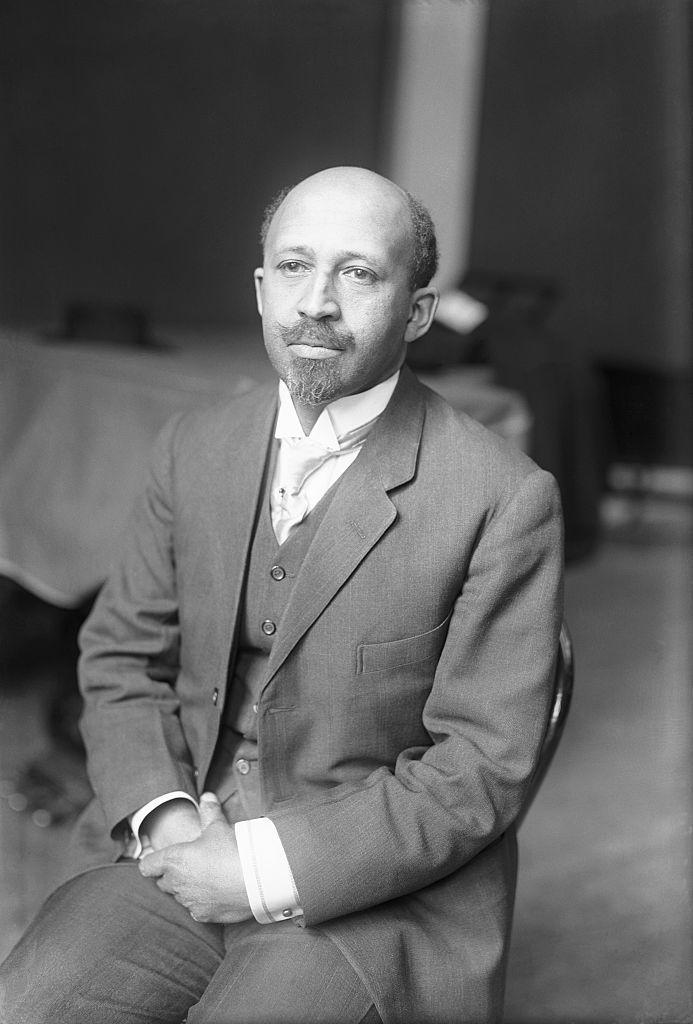
A. Philip Randolph
1889-1979
As a trade unionist and passionate civil rights advocate, A. Philip Randolph created the first successful Black trade union and led them to (reluctant) acceptance into the American Federation of Labor. For much of his career, Randolph fought for equal trade opportunities for Black people. In regards to the ability of African Americans to partake in federal government employment and contracts, he vowed to President Franklin D. Roosevelt that he’d lead thousands in a protest in Washington, D.C., if they didn’t receive equal treatment, resulting in the POTUS signing an executive order that banned discrimination in defense industries and at the federal level. Randolph also founded the League for Nonviolent Civil Disobedience Against Military Segregation, which inspired President Harry Truman to sign an executive order that forbade segregation in the military. He was also a principal organizer for 1963’s March on Washington.
Read More about A. Philip Randolph
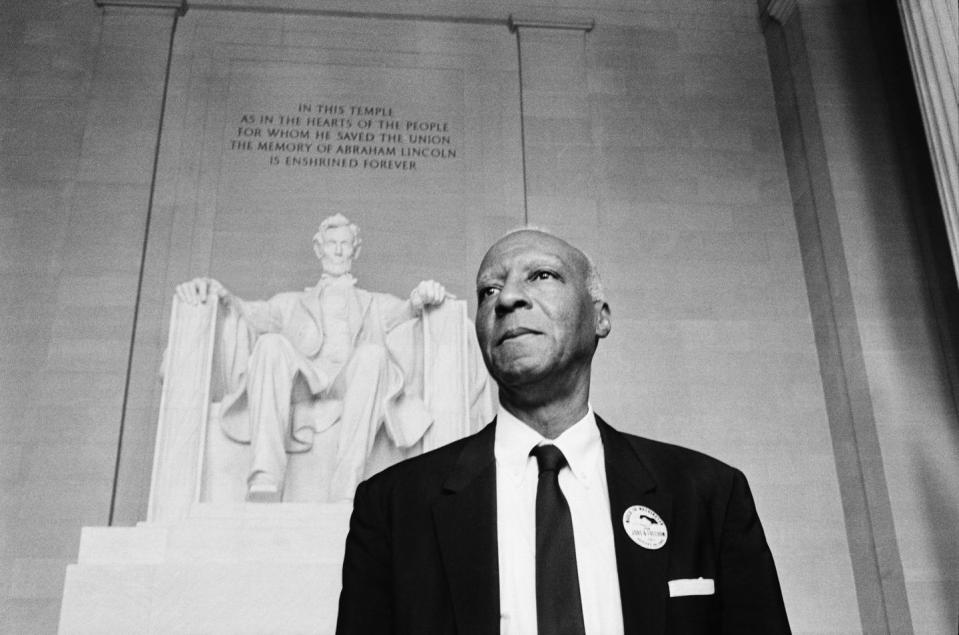
Roy Wilkins
1901-1981
Roy Wilkins was the executive director of the NAACP before stepping down in 1977. He was dedicated to nonviolence and prioritized using legal avenues to fight for change, such as leading the organization during the successful Brown v. Board of Education case and more.
Wilkins was also one of the minds behind the March on Washington in 1963 and received the Presidential Medal of Freedom from President Lyndon Johnson in 1967.
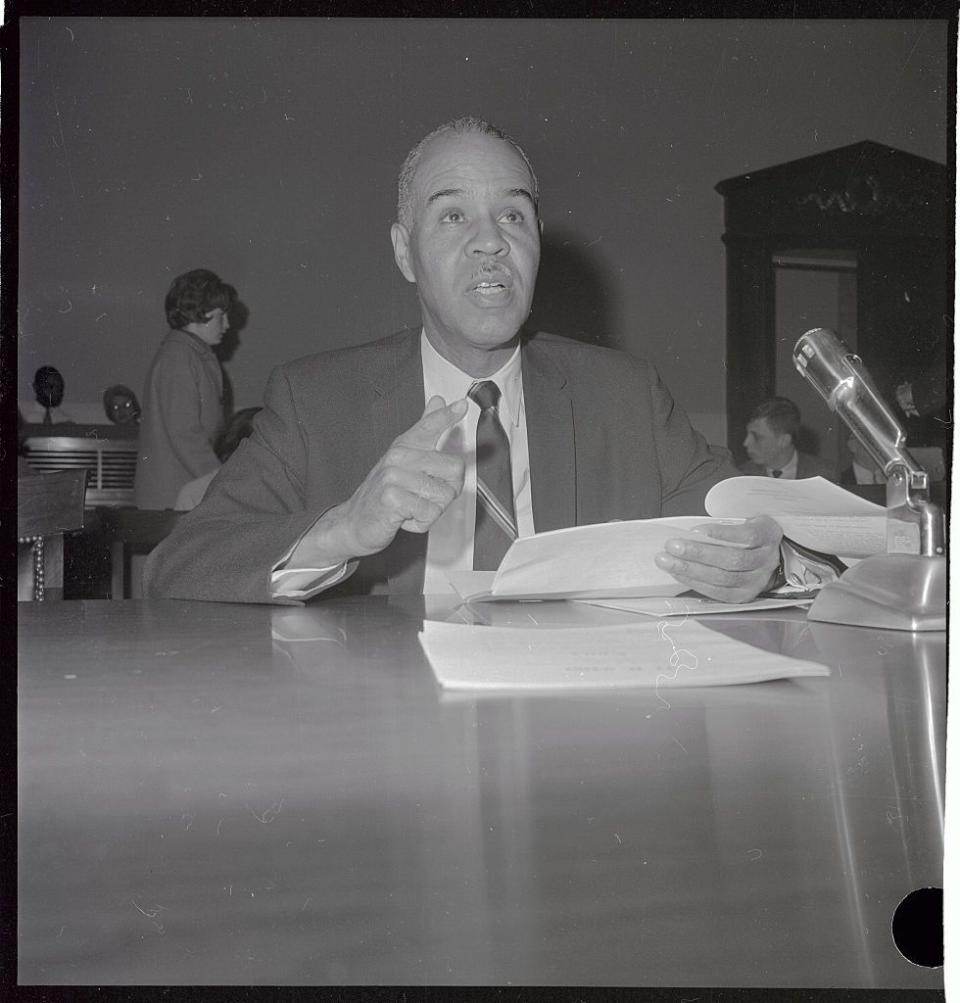
Ella Baker
1903-1986
Ella Baker was a field secretary and branch director for the NAACP who cofounded an organization that raised money to fight Jim Crow laws. She was also a key organizer for Martin Luther King Jr.’s Southern Christian Leadership Conference. But her passion was the Student Nonviolent Coordinating Committee, which she founded to prioritize nonviolent protest. She also helped to organize the 1961 Freedom Rides and aided in registering Black voters.
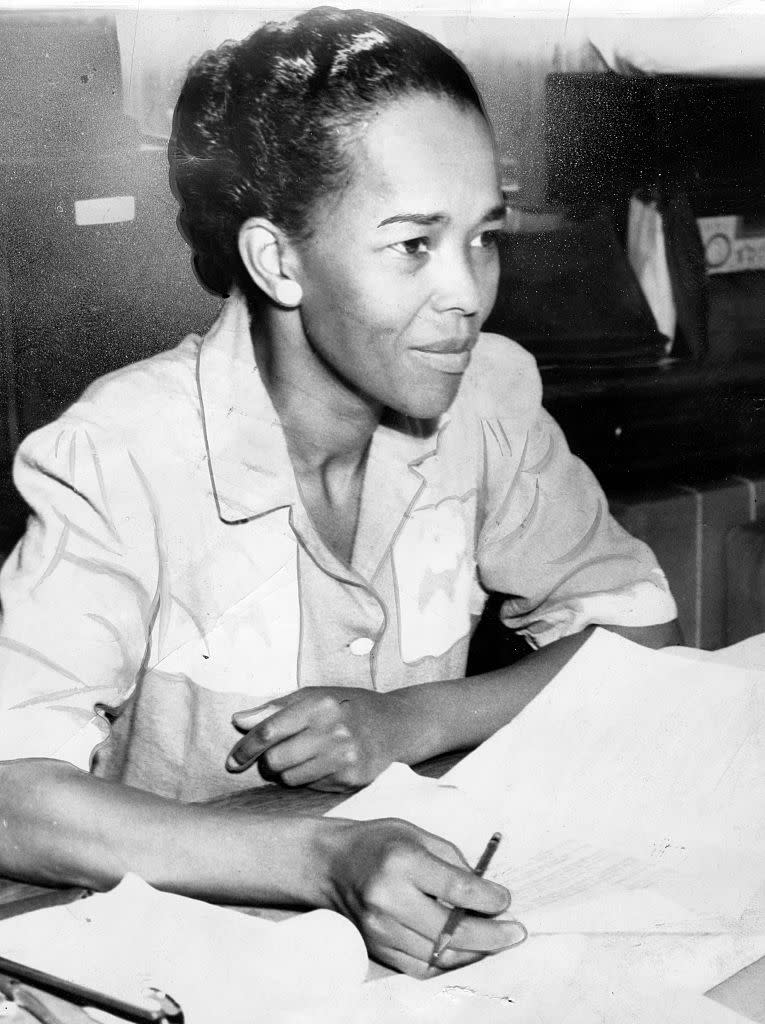
Thurgood Marshall
1908-1993
President Lyndon Johnson appointed Thurgood Marshall to the U.S. Supreme Court in 1967, making him the first African American person to assume this role (which he held for 24 years). He’s also known for arguing and winning the case Brown v. Board of Education, which resulted in the U.S. Supreme Court ruling that segregation in U.S. public schools according to race was unconstitutional in 1954. The attorney won 29 of the 32 cases he argued at the nation’s highest court throughout his career and previously served as chief of the NAACP Legal Defense and Educational Fund in 1940.
Read More about Thurgood Marshall
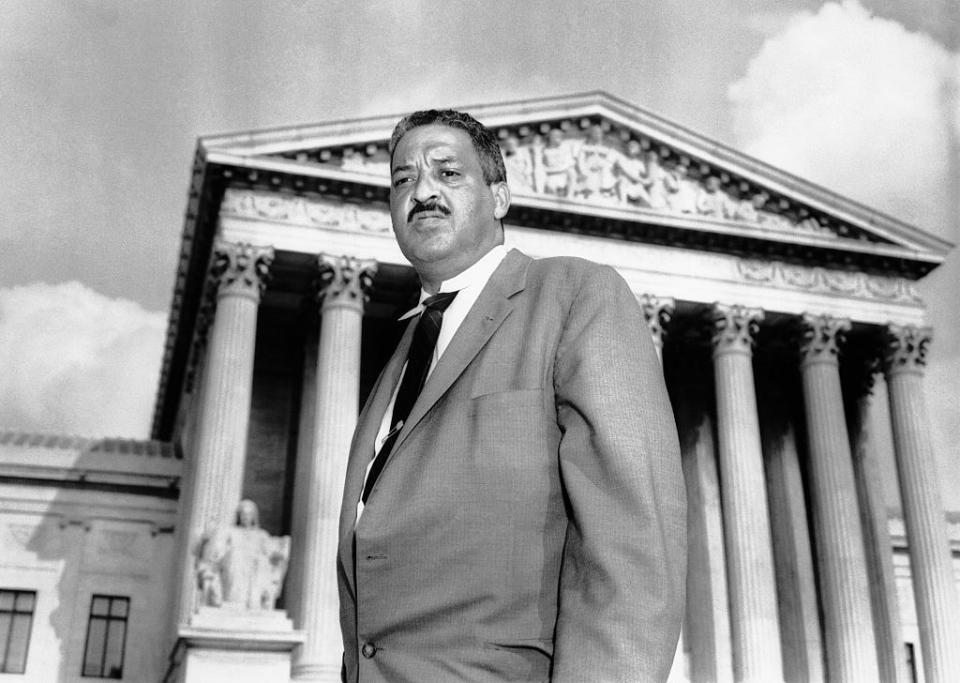
Pauli Murray
1910-1985
Pauli Murray was an author, lawyer, women’s rights activist, the first Black person to earn a doctor of the science of law degree from Yale, and the first Black woman to be ordained an Episcopal priest. Many of Murray’s essays, poems, and books (“Negroes Are Fed Up,” Dark Testament, and States’ Laws on Race and Color) were foundational works of the Civil Rights Movement. Murray cofounded the Congress of Racial Equality and the National Organization for Women in 1966, alongside many noted feminists of the time, and was appointed to President John F. Kennedy’s Committee on Civil and Political Rights.
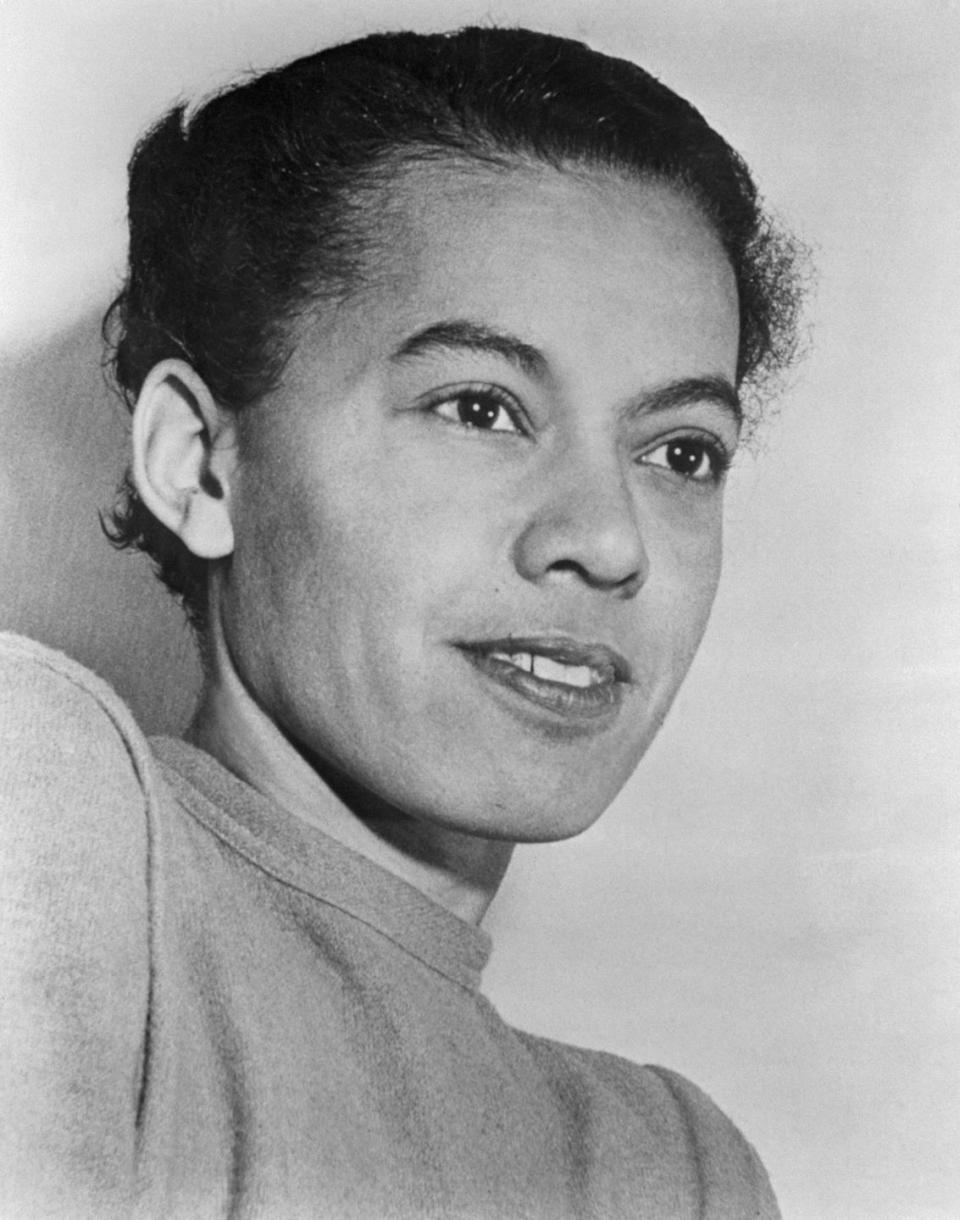
Bayard Rustin
1912-1987
Bayard Rustin’s lifelong commitment to nonviolence was at the root of his leadership in activism, as he’s credited with organizing many mass civil rights demonstrations, including 1957’s Prayer Pilgrimage to Freedom and 1963’s famous March on Washington. Rustin was openly gay, a taboo fact at the time that mostly didn’t deter Martin Luther King Jr. from valuing Rustin as an important adviser. He assisted King through the Montgomery Bus Boycott and the creation of the Southern Leadership Conference, while also deepening King’s knowledge of nonviolent tactics that became a pillar of the renowned leader’s legacy.
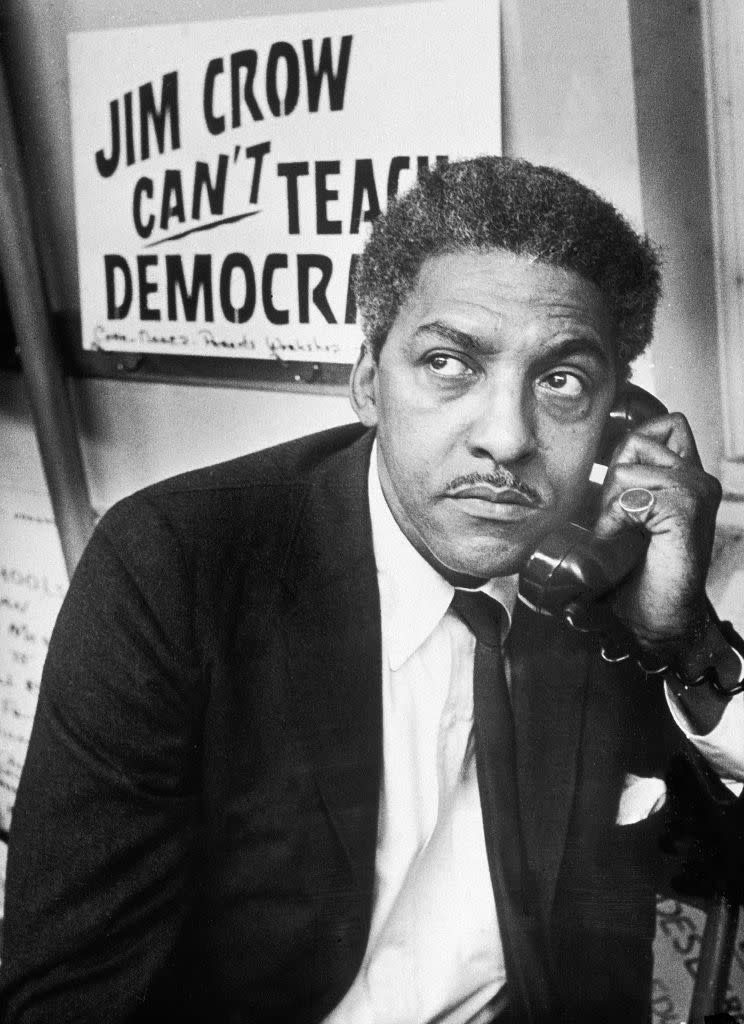
Dorothy Height
1912-2010
After becoming president of the National Council of Negro Women, Dorothy Height served in the position for 40 years, making her one of the most trusted and leading voices for Black women during and after the Civil Rights Movement. It was during this time that she advocated for criminal justice reform and was vocal about the tragedies of lynching in the South. The Women’s History Museum credits her exemplary organizing skills as a way that she earned the trust of the likes of First Lady Eleanor Roosevelt, President Lyndon B. Johnson, Martin Luther King Jr., and President Dwight D. Eisenhower. And as a leading organizer, Height was also welcomed on the speaker’s stage at the 1963 March on Washington, representing the only women’s group involved in the demonstration. In 1994, she was honored with the Presidential Medal of Freedom, and in 2004, she was given the Congressional Gold Medal.
Read More about Dorothy Height
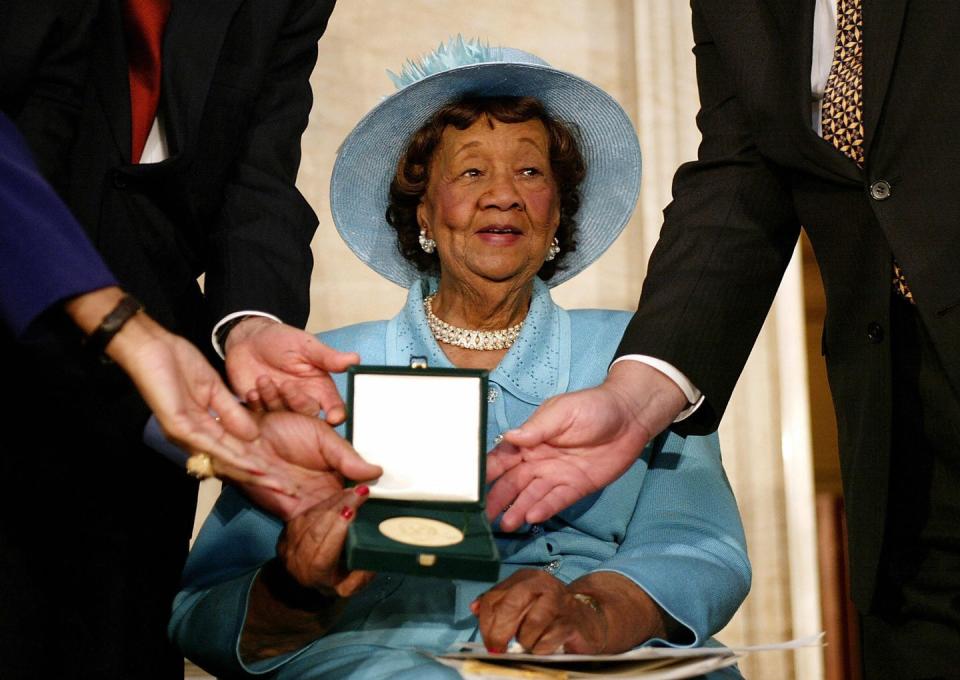
Rosa Parks
1913-2005
Rosa Parks is synonymous with the peak of the Civil Rights Movement. It all stems from December 1, 1955, in Montgomery, Alabama, when Parks refused to give up her seat on a segregated bus to a white passenger. Despite being arrested and jailed, her bravery sparked the famous Montgomery Bus Boycott, which led to the segregation of buses being deemed unconstitutional.
But her activism did not begin with that fateful day. At the time, Park had a passion for social justice and was the secretary of the Montgomery chapter of the NAACP. After the boycott, she was awarded the Presidential Medal of Freedom by Bill Clinton in 1996 and was given the Congressional Gold Medal in 1997. Following her death in 2005, Parks became the first woman to lie in honor in the Capitol Rotunda.
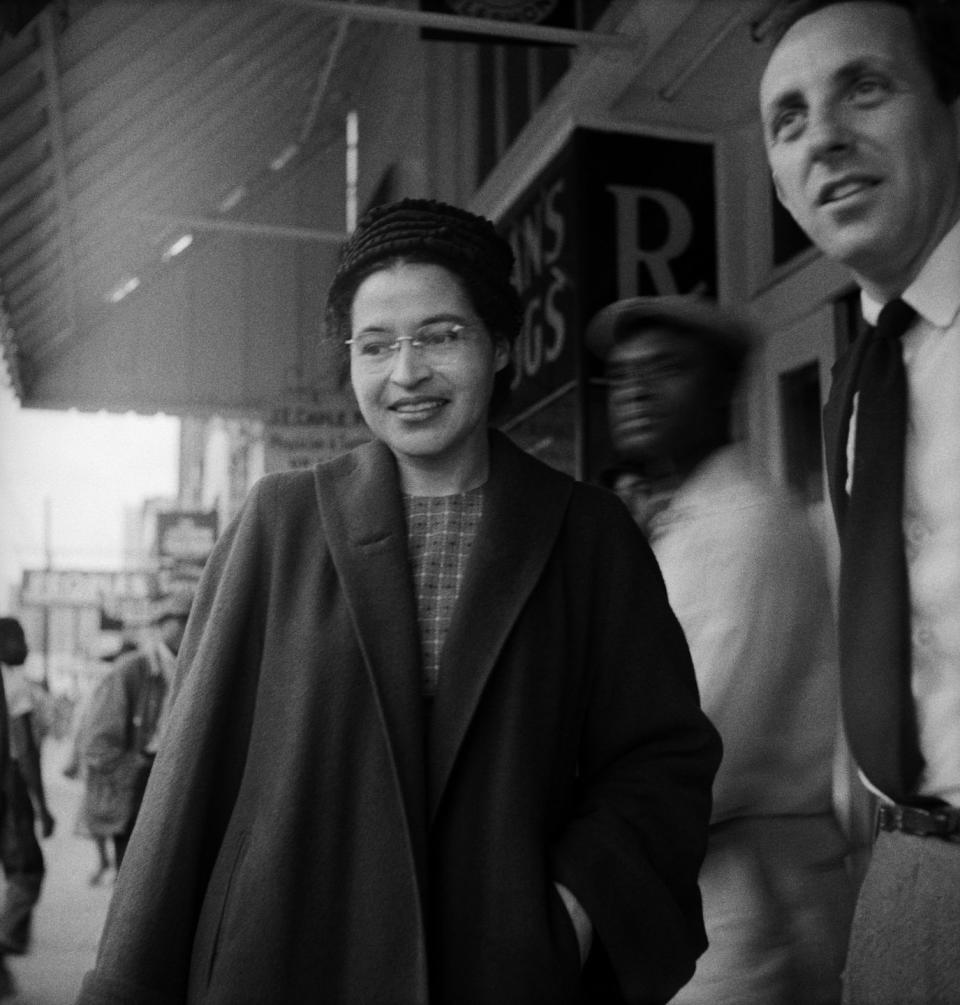
Whitney Young Jr.
1921-1971
Beginning in 1961, World War II veteran Whitney Young Jr. was the executive director of the National Urban League for 10 years, where he developed relationships with white politicians to influence public policy to benefit the Black poor and working class. He was a trusted adviser for Presidents John F. Kennedy, Richard Nixon, and Lyndon B. Johnson. According to Clark Atlanta University, Young coauthored Johnson’s “War on Poverty” legislation.
Read More about Whitney Young Jr.
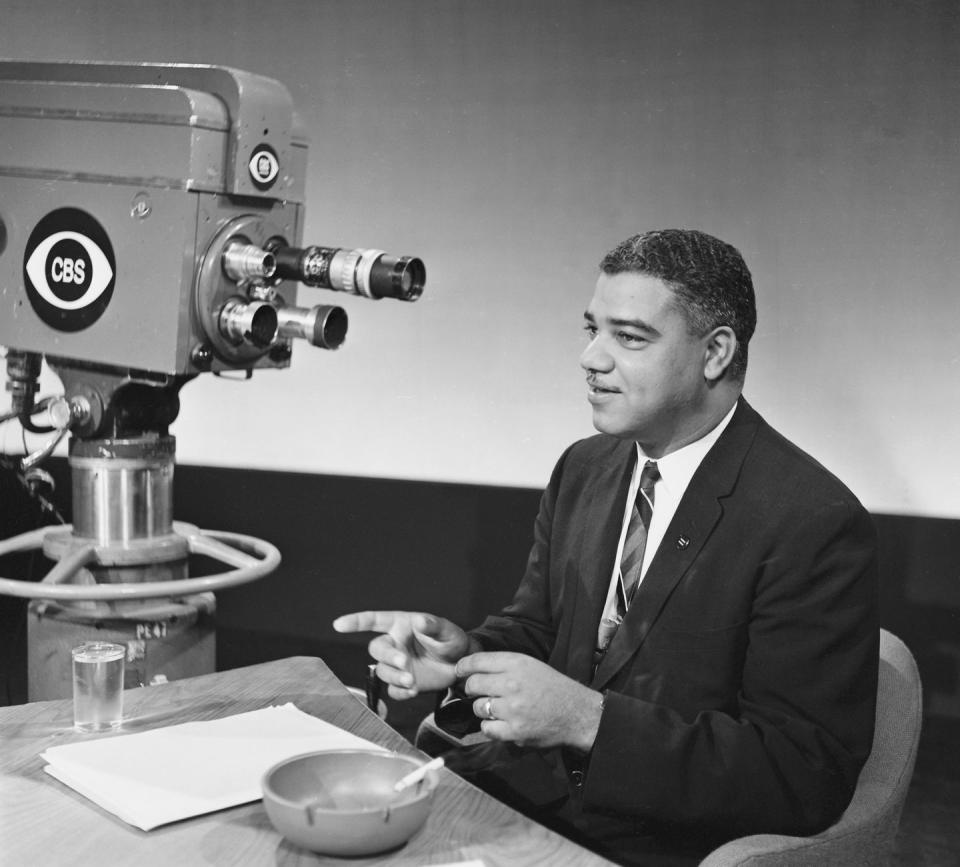
Malcolm X
1925-1965
After he converted while in prison for robbery, Malcolm X’s Islamic faith was the foundation of his social justice advocacy. As a prominent leader and voice in the Nation of Islam, Malcolm X preached ideals of Black nationalism and independence by tapping into the anger and frustration that resulted from years of racism and segregation. He was vocal about disagreeing with the nonviolent tactics of the mainstream Civil Rights Movement led by Martin Luther King Jr., insisting that white people were innately evil and Black people were superior. His words fueled the Black Power movement in the 1960s and ’70s.
However, two years before his death, he broke from the Nation of Islam and, in 1964, converted to Sunni Islam. He softened his more extreme views and formed the Organization of Afro-American Unity in hopes of globalizing the Black American fight.
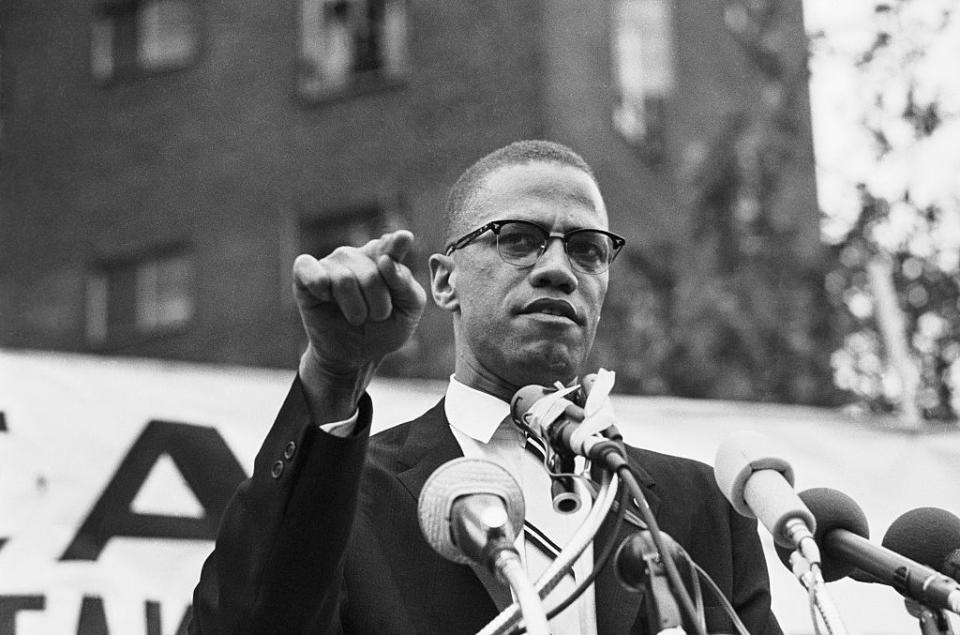
James Meredith
1933-present
U.S. Air Force veteran James Meredith became the first Black student to integrate the University of Mississippi in 1962. But this achievement followed a string of tumultuous events, including multiple registration attempts, opposition that led Meredith to take legal action, the involvement of the U.S. Supreme Court, and violent rioting on campus among hundreds of marshals, soldiers, and others. Two bystanders died in the tumult. Now 90 years old, Meredith is the author of multiple books and has been involved in politics.
Read More about James Meredith
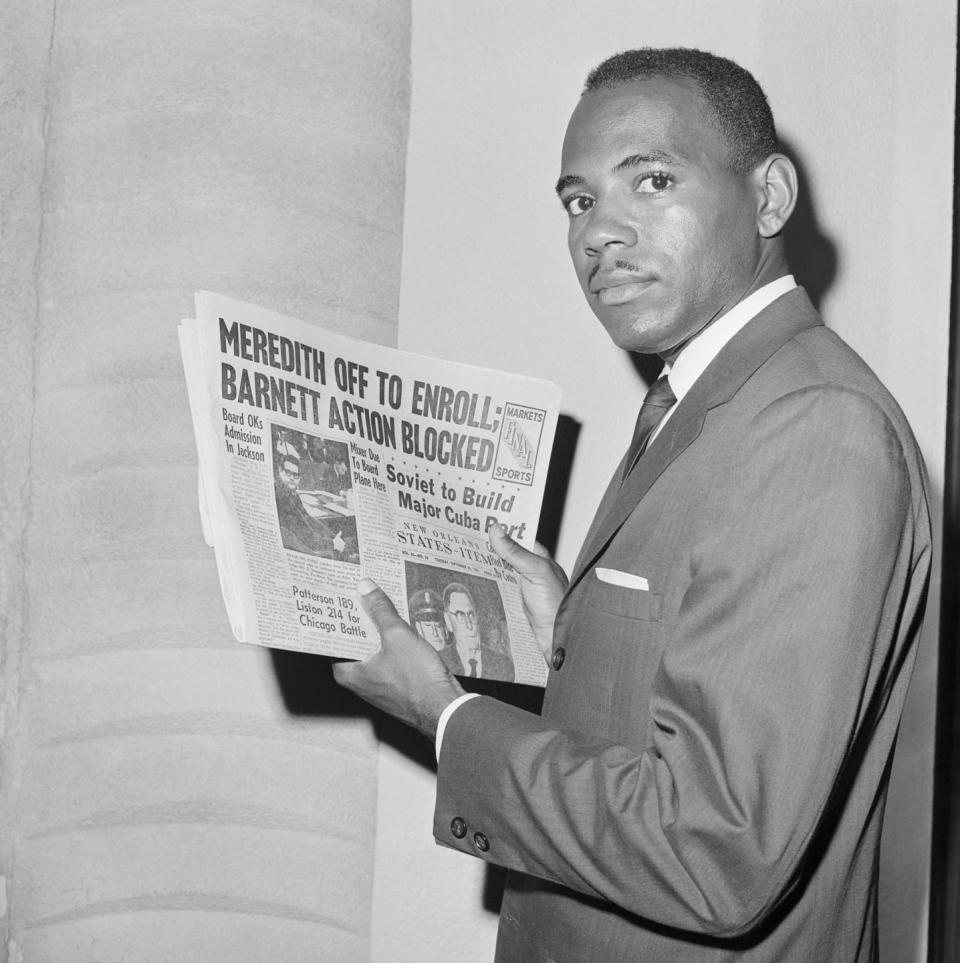
Julian Bond
1940-2015
Morehouse College graduate Julian Bond was a prominent and outspoken figure of the Civil Rights Movement. While a student at the historically Black college, he cofounded the Student Nonviolent Coordination Committee (SNCC) alongside John Lewis. SNCC was opposed to the Vietnam War and repeatedly directed the national media’s attention to the racist treatment of Black Americans in the South.
Bond was a member of the Georgia General Assembly for 20 years and elected to the Georgia House of Representatives in 1965. However, he was blocked from the seat by white members of the House who saw him as disloyal for opposing the war in Vietnam. A year later, the U.S. Supreme Court ordered him to be seated on the grounds of freedom of speech. He held the position for six terms. The statesman was also the cofounder of the Southern Poverty Law Center and chairman of the NAACP.
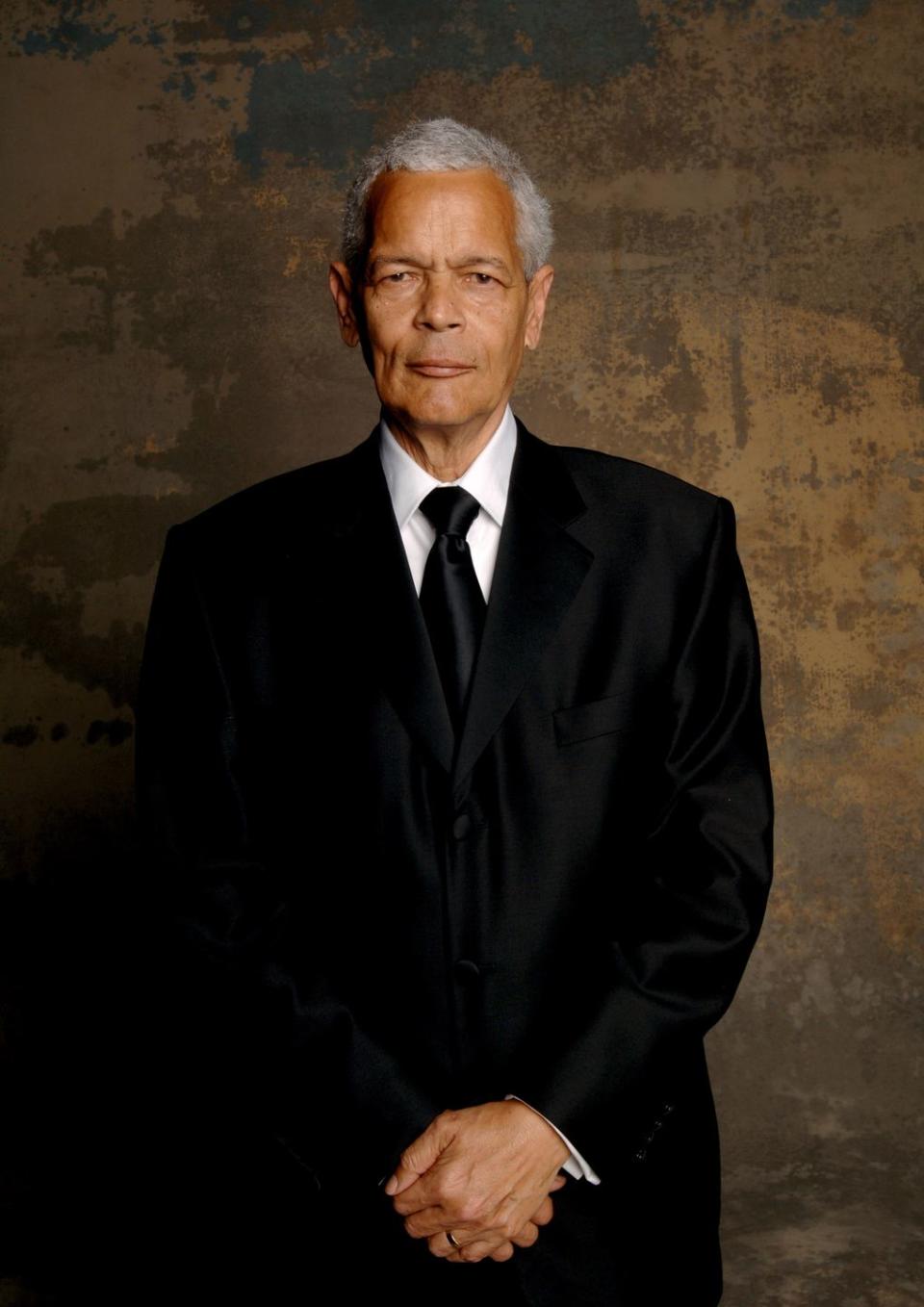
John Lewis
1940-2020
John Lewis—the man who coined the term “good trouble”—was a pillar for social justice and a staunch advocate for nonviolent civil rights demonstrations. Lewis was arrested multiple times in the Jim Crow South for organizing sit-ins at segregated lunch counters and participating in the 1961 Freedom Rides. Dubbed one of the “Big 6” of the Civil Rights Movement—along with Martin Luther King Jr., A. Philip Randolph, Roy Wilkins, James Farmer, and Whitney Young Jr., Lewis was the youngest speaker and organizer of the March on Washington.
Lewis also led the march from Selma to Montgomery, Alabama, and the crossing of Edmund Pettus Bridge on what became known as “Bloody Sunday” after state troopers brutally attacked marchers. Lewis suffered a fractured skull, yet the demonstration and its aftermath influenced the passing of the Voting Rights Act, which Lewis remained a staunch supporter of until his last days.
In 1986, he was elected to the House of Representatives in Georgia’s 5th district. It was a position he held until his death in 2020. The politician was also a recipient of the Presidential Medal of Freedom, awarded to him by Barack Obama in 2011.
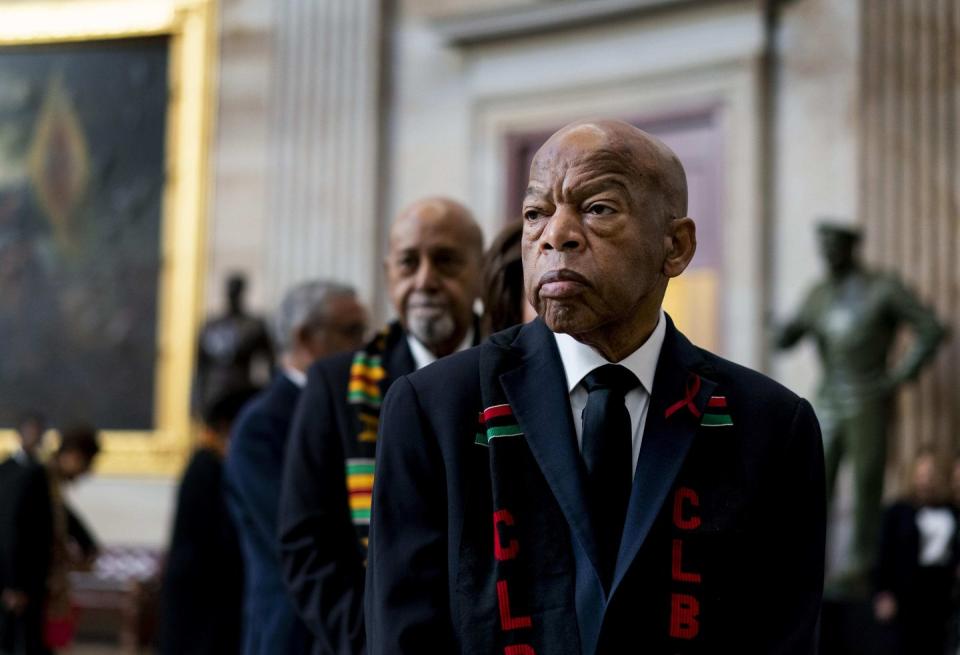
Marsha P. Johnson
1945-1992
Marsha “Pay It No Mind” Johnson is known to many as the leader of the gay liberation movement. She led an uprising after members of the LGBTQ community were harassed at at the Stonewall Inn by members of the New York Police Department in 1969. Johnson was a successful drag queen and used her influence to lift up others, creating the Street Transvestite Action Revolutionaries in 1970, an organization that worked to find housing for homeless transgender youth.
Read More about Marsha P. Johnson
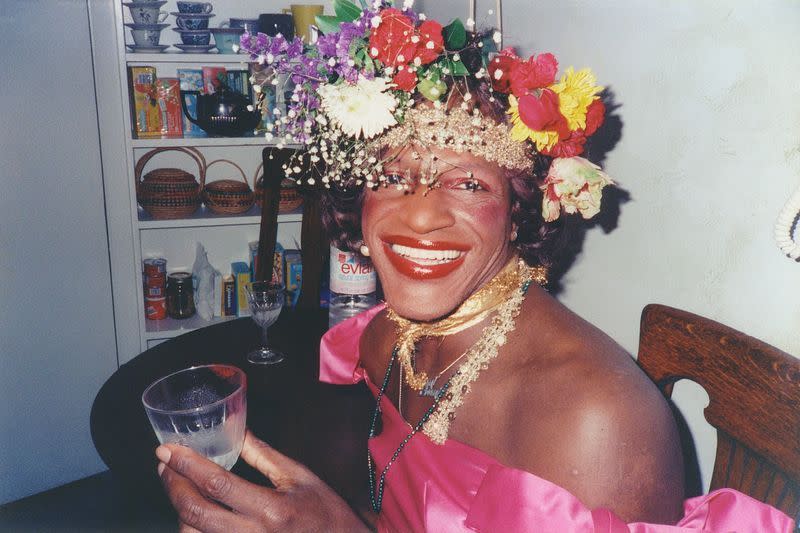
Ruby Bridges
1954-present
At age 6, Ruby Bridges became the first Black student to integrate William Franz Elementary School—a white public school in New Orleans—in November 1960. Southern states had been opposing the 1954 Brown v. Board of Education ruling that made segregation in public schools unconstitutional, but Louisiana was forced to integrate following a federal court order.
Angry onlookers jeered at Bridges as she walked by with the help of federal marshals on her first day, and white parents removed their kids from the institution. She was the youngest Black student to do this in the American South.
Norman Rockwell’s famous 1963 painting depicts her groundbreaking walk on that first day. In 2011, President Barack Obama paid tribute to Bridges, now 69, at the White House.
Schools in states like California and Oregon observe Ruby Bridges Walk to School Day annually on November 14.
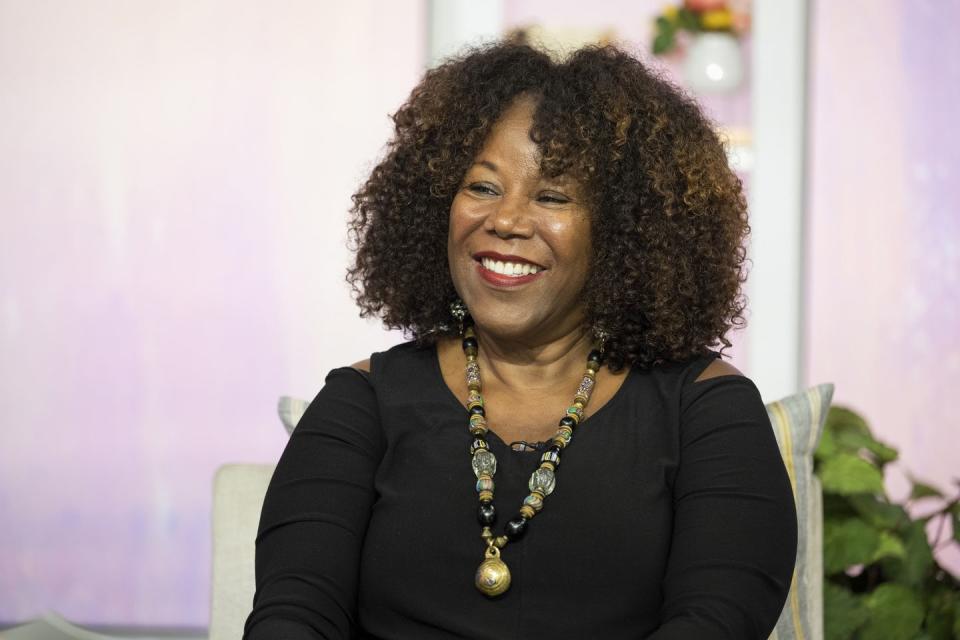
Phil Wilson
1956-present
After being diagnosed with HIV in 1987 and seeing his partner die of AIDS just two years later, Phil Wilson made it his mission to spread awareness and education of the disease during a time where very little was known. He was the AIDS coordinator for the city of Los Angeles and the director of policy and planning for AIDS Project Los Angeles. In 1999, Wilson founded the Black AIDS Institute to ensure education surrounding prevention and treatment would reach communities in need through policy. In 2010, Barack Obama appointed Wilson to his President’s Advisory Council on HIV/AIDS. Now in his late 60s, Wilson retired from his post as president and CEO of the Black AIDS Institute in 2018.
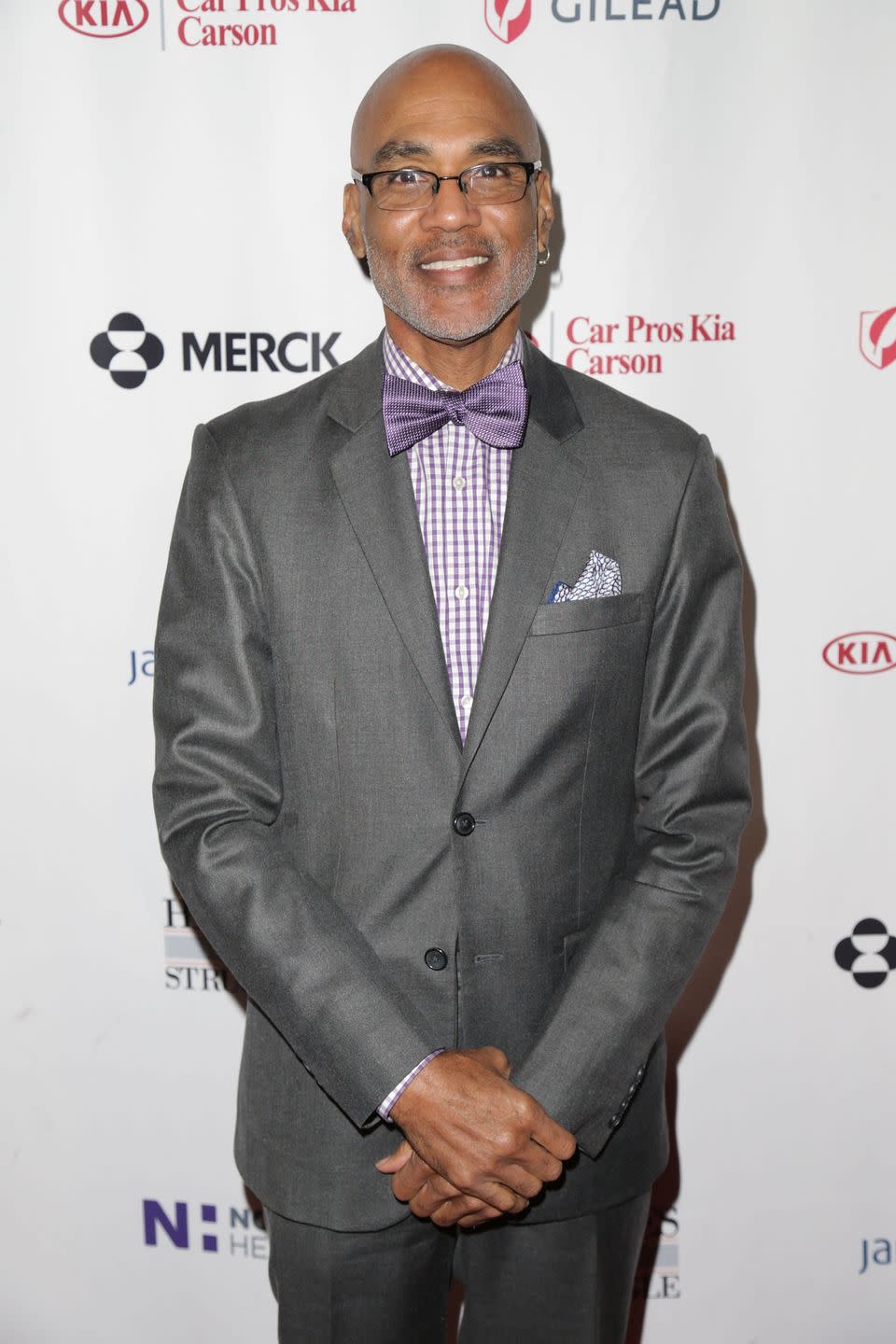
Michelle Alexander
1967-present
With the publication of her 2010 bestselling book, The New Jim Crow, author Michelle Alexander helped to change the way race and criminal justice were discussed in America. Her argument? Mass incarceration and the disproportionate arrest of Black people were the country’s new, legal ways to keep segregation and inequality alive.
Alexander, 56 years old, is also a Stanford graduate, a civil rights lawyer, and an educator. She previously served as director of the Racial Justice Project for the ACLU of Northern California. She is currently a visiting professor at Union Theological Seminary.
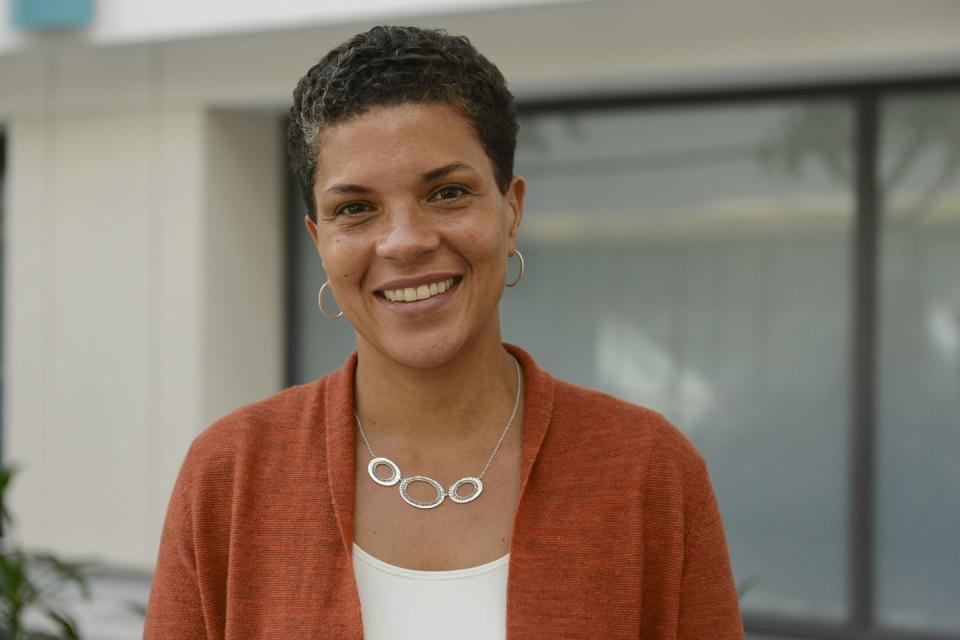
Tarana Burke
1973-present
As a community organizer and activist, 50-year-old Tarana Burke is known to many as the founder of the #MeToo movement, putting a hashtag behind the often untold stories of victims of sexual assault. Although Burke had developed #metoo years before through her nonprofit, JustBe Inc., it became a cultural movement when thousands used it on social media during 2017’s Harvey Weinstein sex abuse scandal. That same year she was named Time magazine’s Person of the Year.
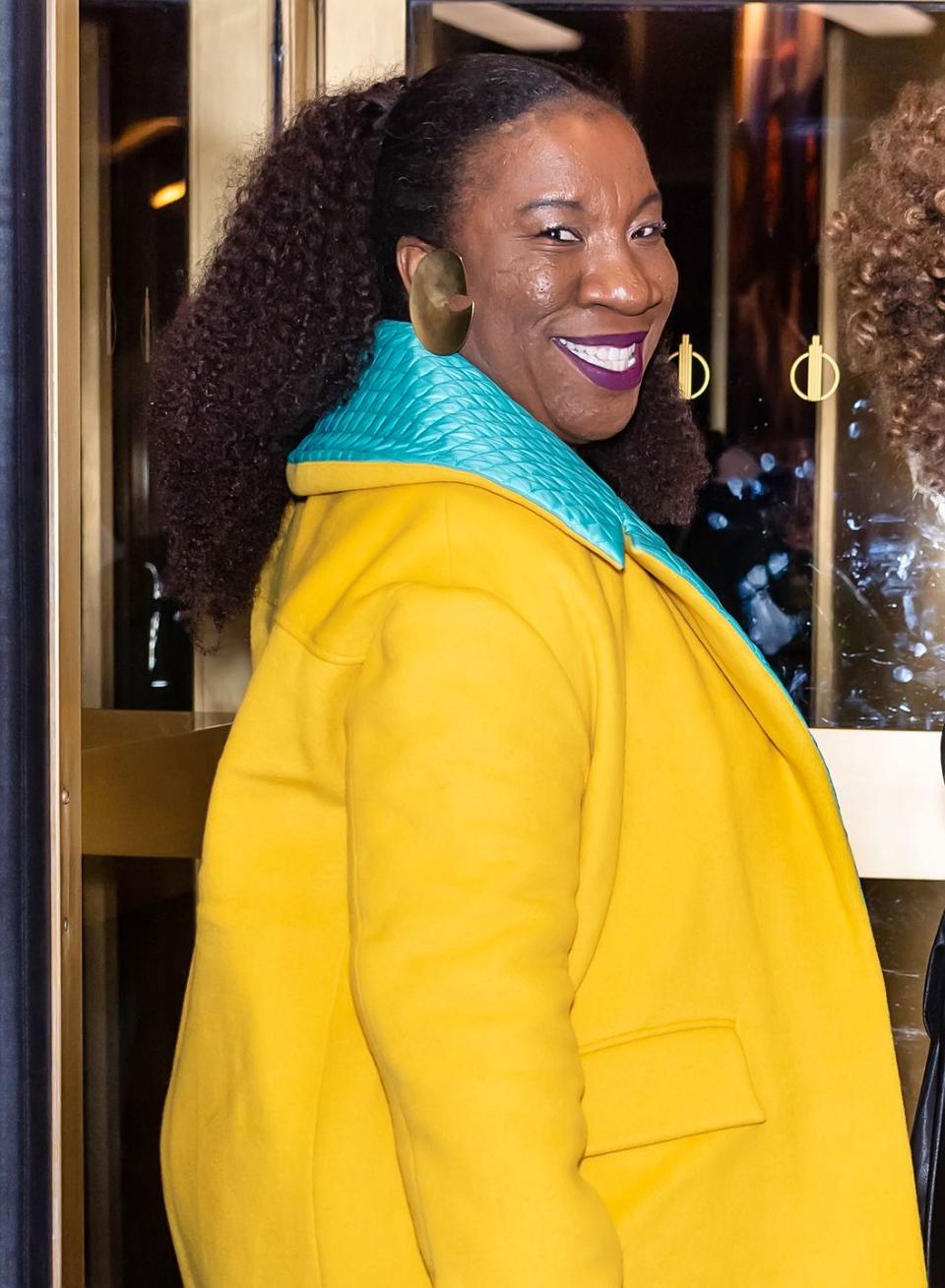
Lateefah Simon
1977-present
Based in Oakland, California, and the Bay Area, Lateefah Simon has earned national recognition as a civil rights advocate since becoming the youngest person ever to receive the MacArthur Foundation “Genius” Award in 2003. After the tragic police killing of Oscar Grant, Simon was elected to the Bay Area Rapid Transit Board of Directors and served as president in 2020. In her board position, she influences policy through the lens of racial justice.
Simon, 47, was also executive director of the Lawyers’ Committee for Civil Rights of the San Francisco Bay Area and led San Francisco’s reentry anti-recidivism youth services division under Vice President Kamala Harris’ time as district attorney. Simon is currently running for a seat in the U.S. House in the November 2024 general election; the Democrat hopes to represent California’s 12th Congressional District.
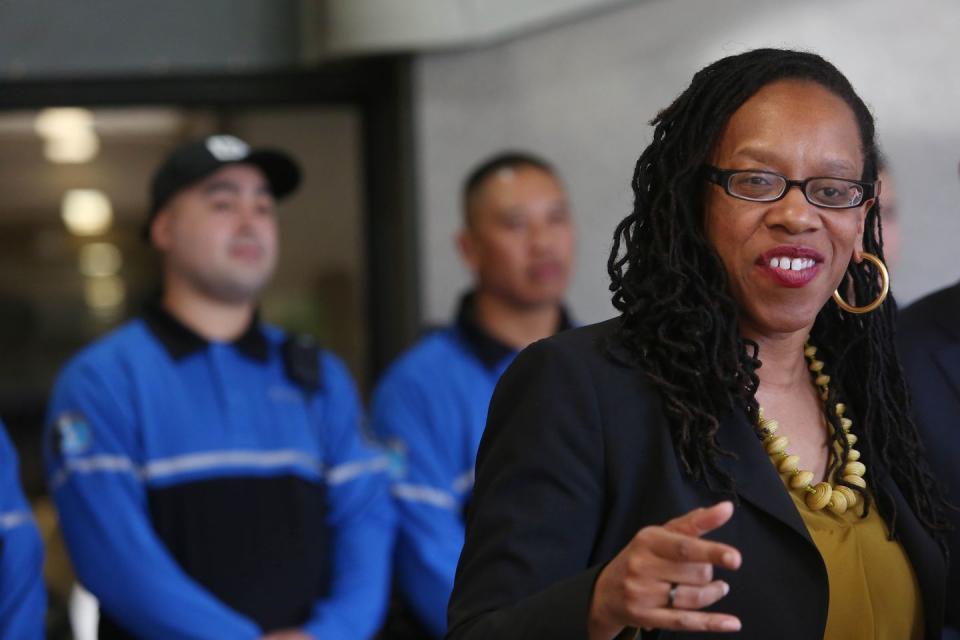
Ibram X. Kendi
1982-present
During the resurgence of the #BlackLivesMatter movement in the summer of 2020, many turned to Ibram X. Kendi’s How to Be Antiracist in order to fully understand the impact of racism and implicit bias in America, and how to combat this institutionalized issue by practicing antiracism. A scholar, author, National Book Award winner, and historian, 41-year-old Kendi is the founding director of Boston University’s Center for Antiracist Research and previously served as the founding director of American University’s Antiracist Research and Policy Center. In 2020, Time named him one of their 100 most influential people in the world.
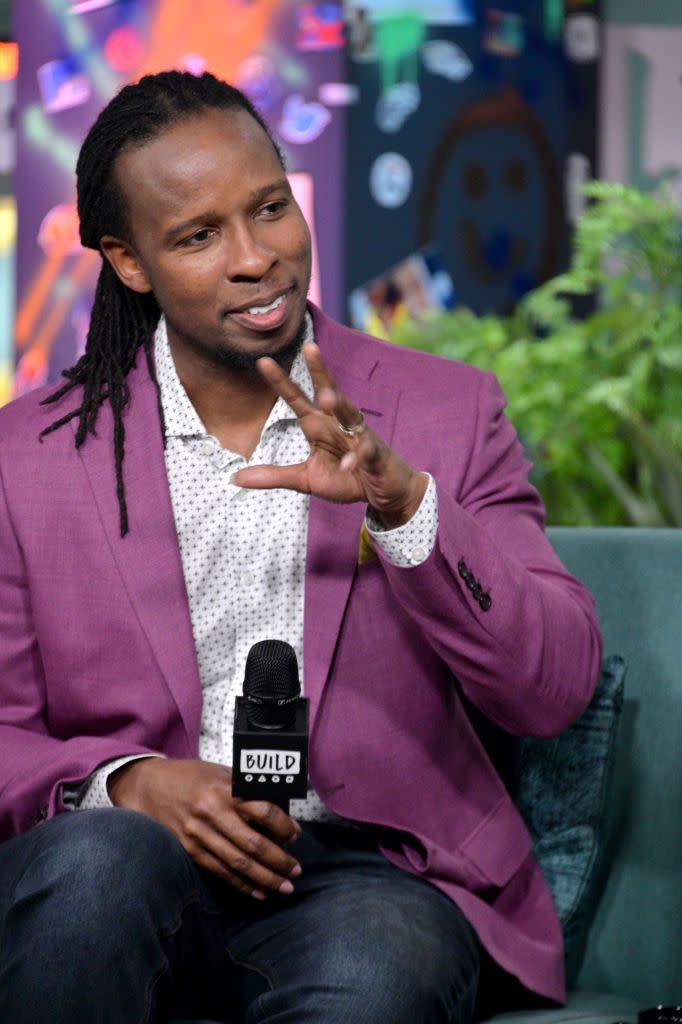
Alicia Garza, Patrisse Cullors, and Ayo Tometi
Alicia Garza, 43, Patrisse Cullors, 40, and Ayo Tometi, 39, are the founders of Black Lives Matter. The organization, which was started in 2013 as a reaction to the acquittal of Trayvon Martin’s killer, has put a global name to the ever-evolving cultural movement that Black lives deserve the equal respect, human treatment, and level of livelihood experienced by their white counterparts. They act as an inclusive, nonviolent space to enforce these ideals on both a national and local scale through protest, policy, and social media campaigns. Garza, Cullors, and Tometi were each named on Time’s 2020 most influential people in the world list.
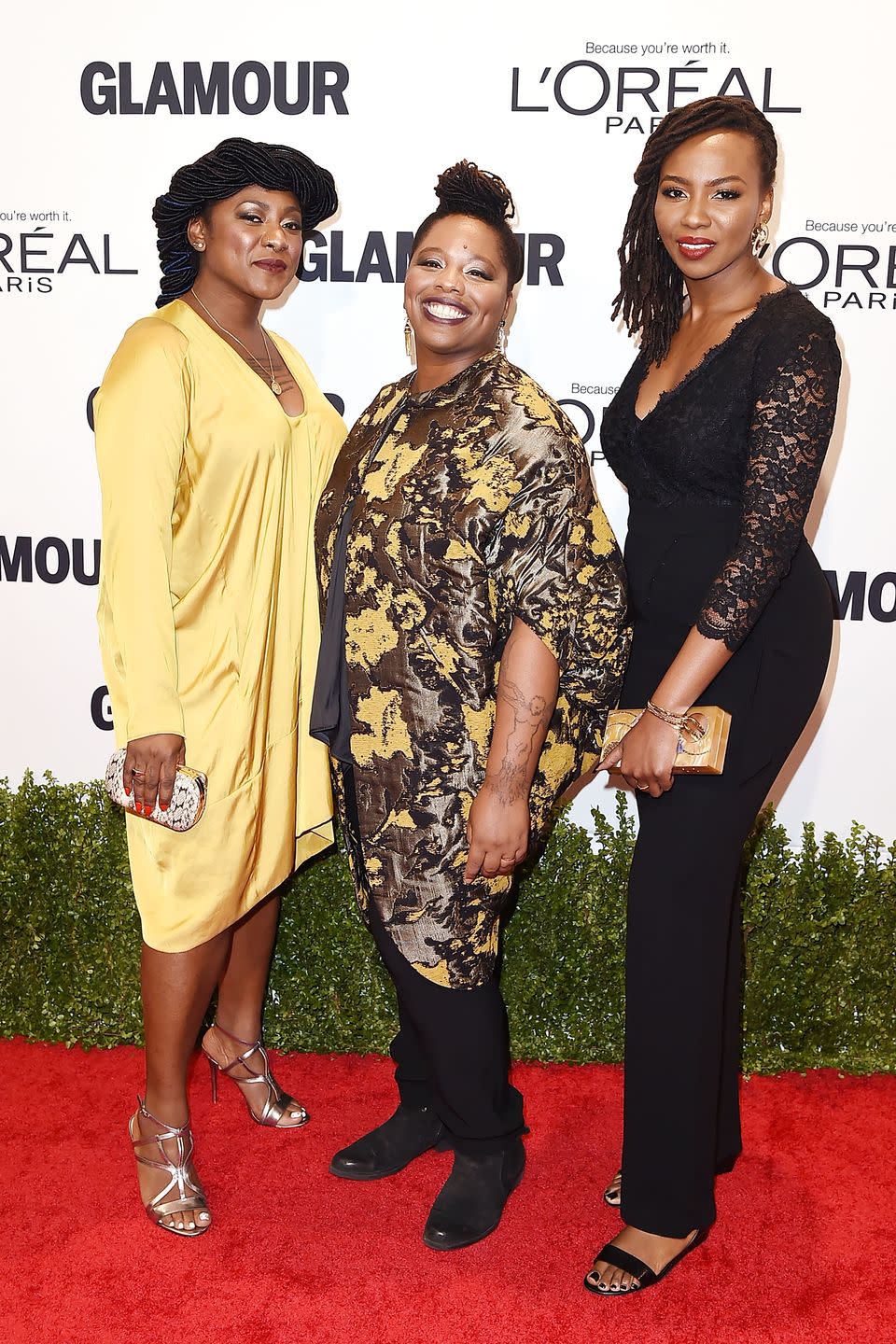
James Rucker
c. 1969-present
Originally a software entrepreneur, James Rucker cofounded Color of Change in 2005 alongside CNN contributor Van Jones in order to provide relief to victims of Hurricane Katrina. In the years since, Color of Change has evolved into a prominent online civil rights organization that serves as a resource for the Black community to use in order to mobilize government and corporations to fight against injustice. Rucker, who is in his 50s, is also the board chair of the Leadership Conference Education Fund and serves on the boards of the Southern Poverty Law Center Action Fund and MoveOn.org.
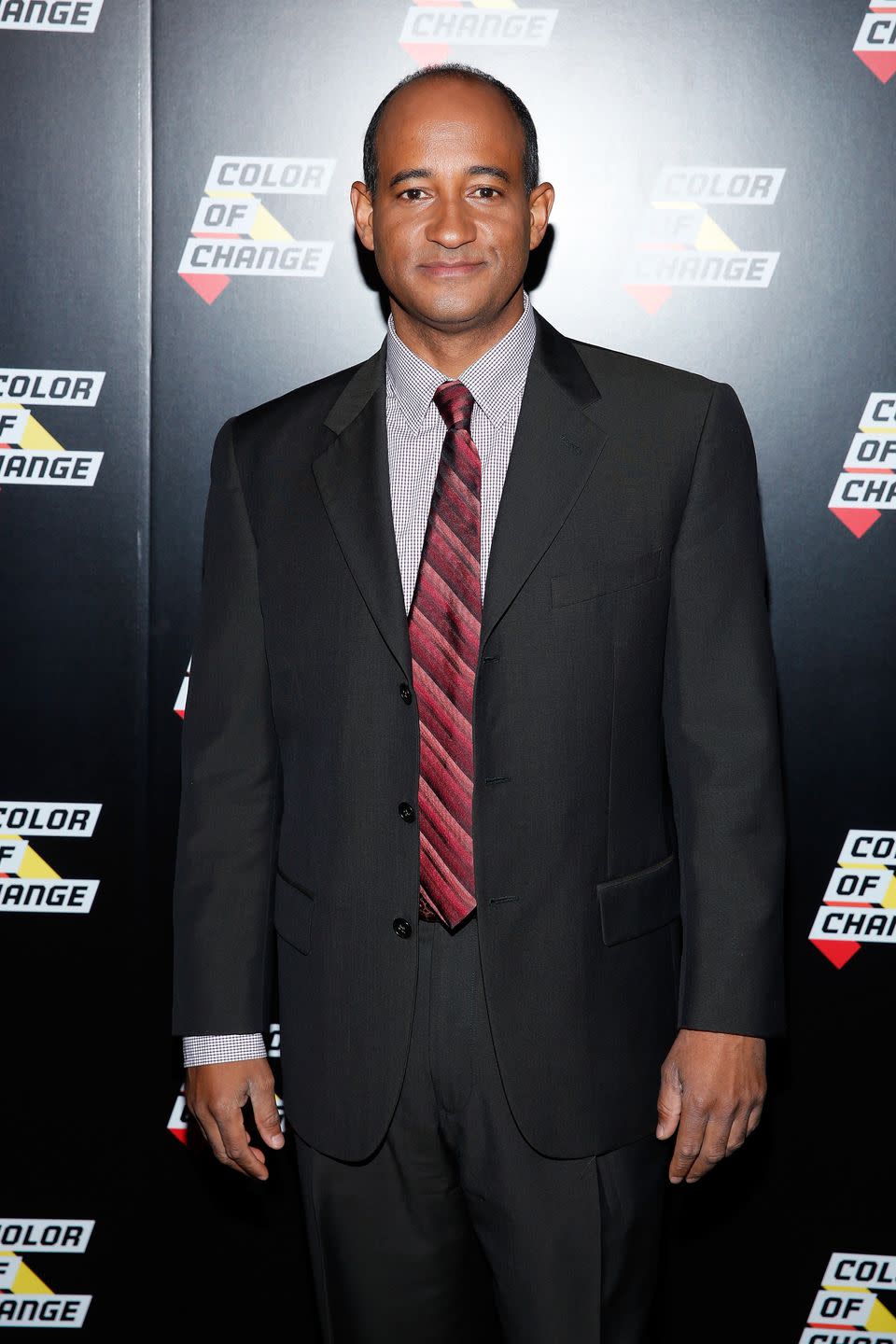
Kristen Clarke
c. 1975-present
In 2021, Kristen Clarke became the first Black woman to lead the Justice Department’s Civil Rights Division as the assistant attorney general for civil rights. The attorney and former member of the NAACP Legal Defense and Educational Fund was also president and executive director of the National Lawyers’ Committee for Civil Rights Under Law. Throughout her career, she’s advocated for fair housing, voting rights, gender equality, and more on behalf of Black Americans.
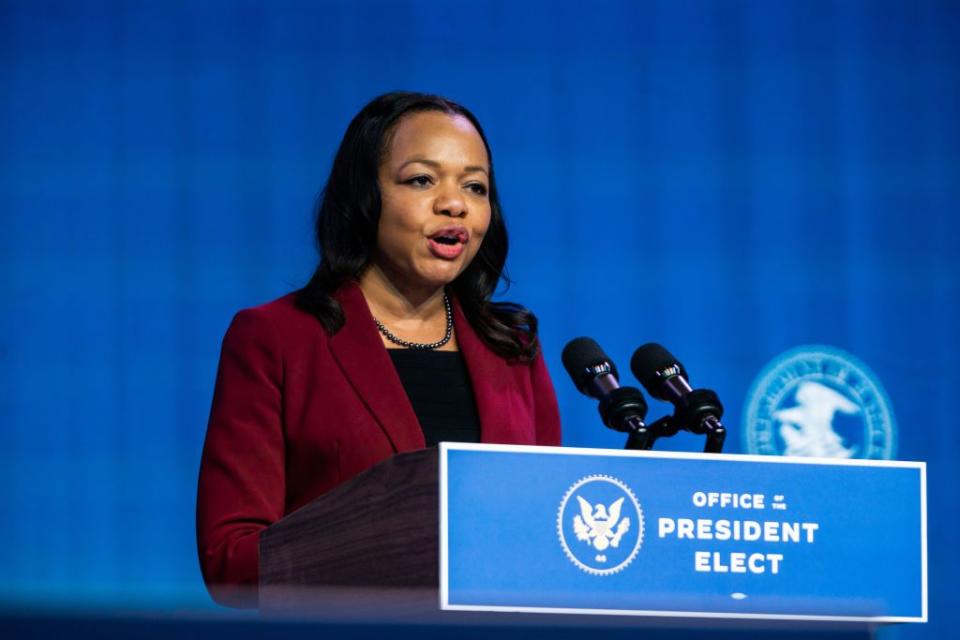
Nekima Levy Armstrong
1976-present
Minneapolis-based Nekima Levy Armstrong, 47, is a civil rights attorney, former president of the city’s NAACP chapter, and founder of the Racial Justice Network, a multiracial organization “committed to fighting for racial justice and building bridges across racial, social, and economic lines,” according to its website. Armstrong was one the activists instrumental in organizing the country’s first protests in George Floyd’s name following his murder at the hands of former police officer Derek Chauvin, who was found guilty on three counts of murder.
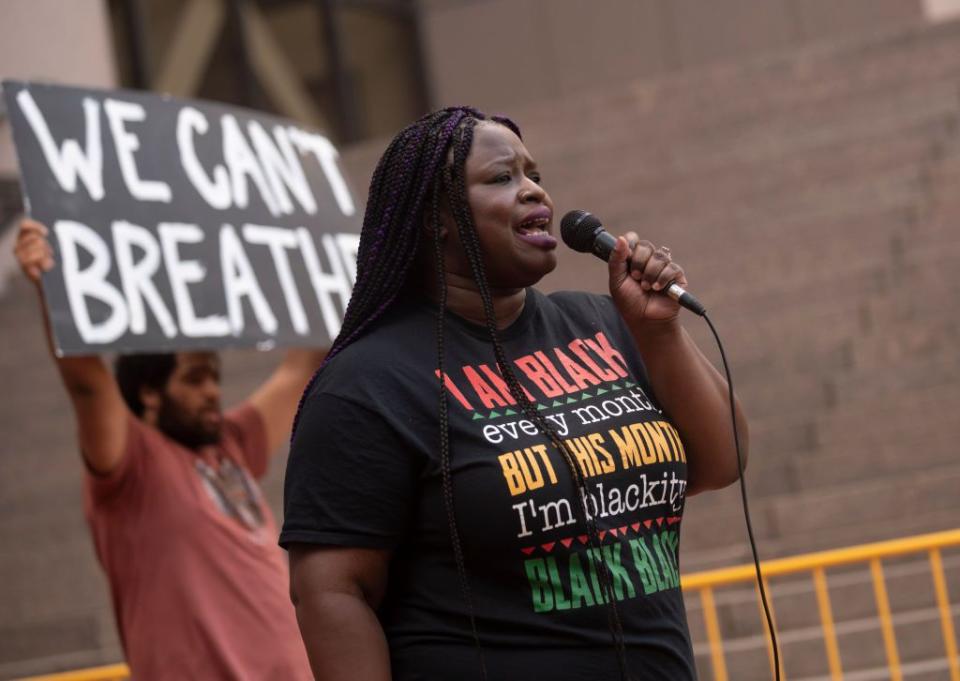
Brittany Packnett Cunningham
1984-present
As a social justice leader, educator, and organizer, Brittany Packnett Cunningham was one of the key member of the Ferguson Uprising in response to the police killing of Michael Brown in Ferguson, Missouri, in 2014. The 39-year-old was a part of the Ferguson Commission, President Barack Obama’s Task Force on 21st Century Policing, and is founder of social impact firm Love & Power Works.
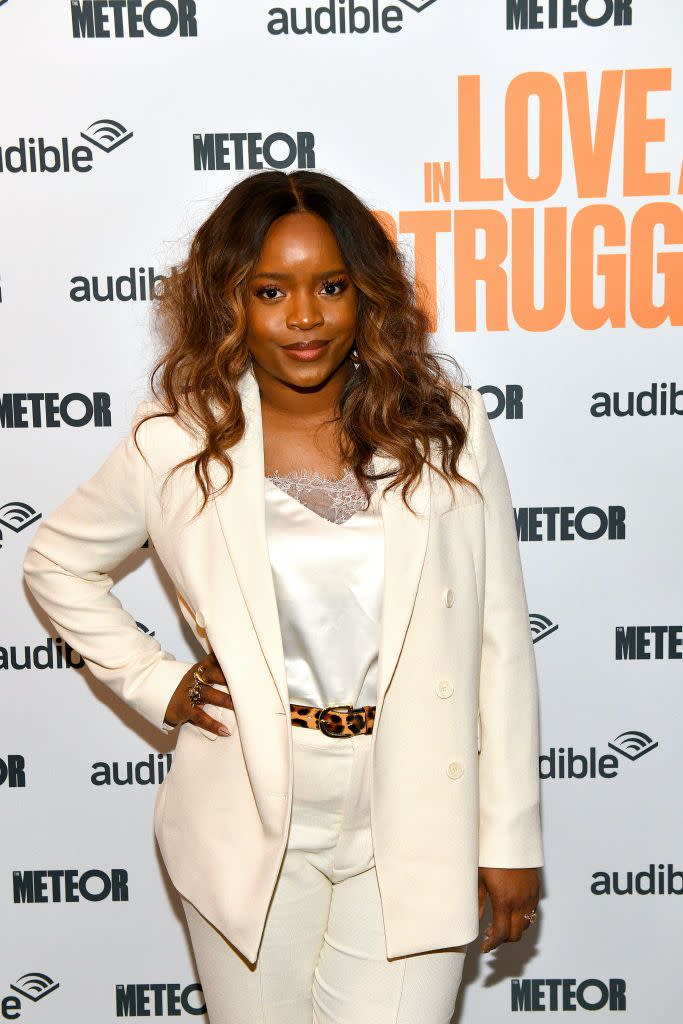
You Might Also Like

